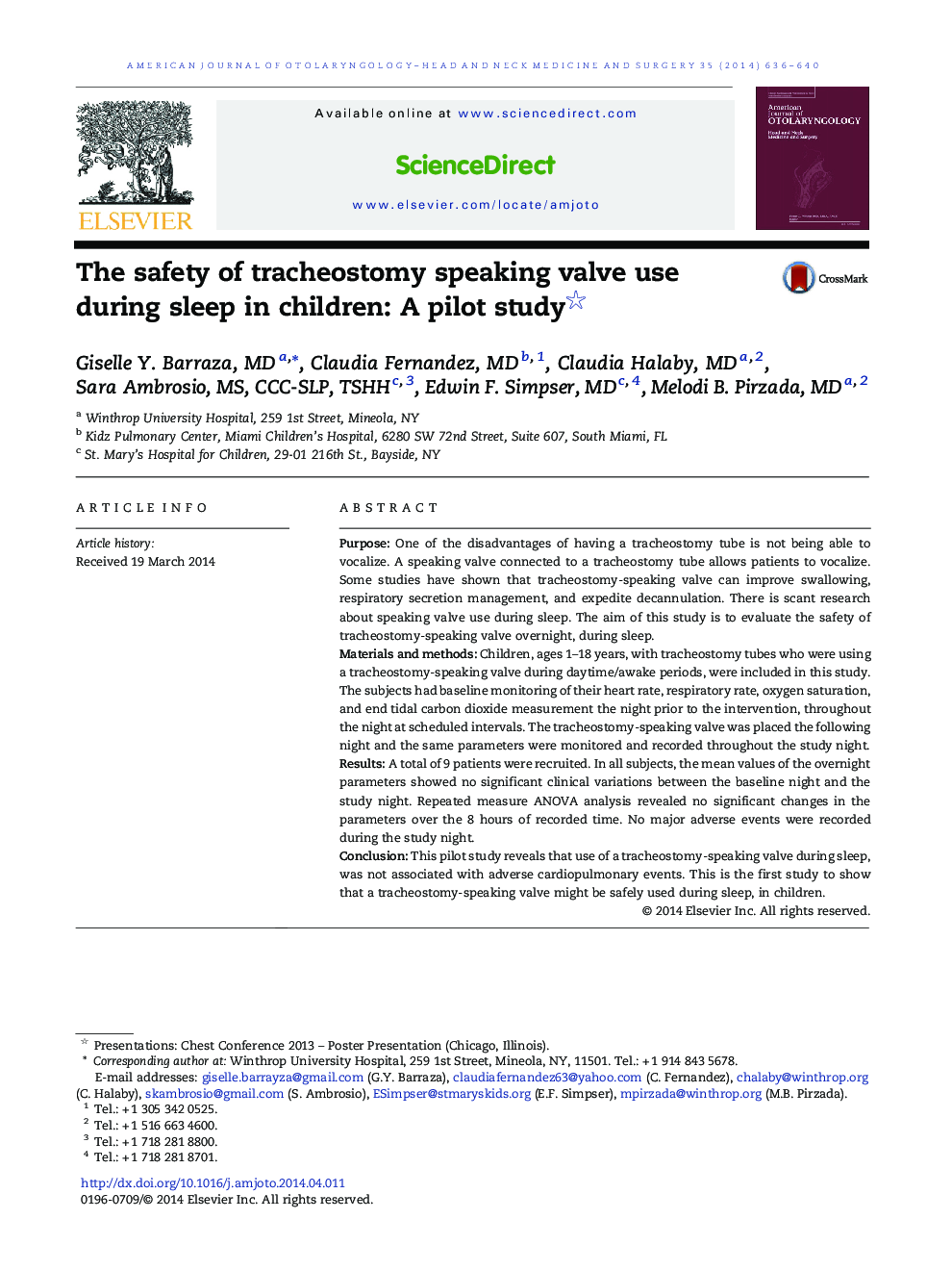| Article ID | Journal | Published Year | Pages | File Type |
|---|---|---|---|---|
| 4103359 | American Journal of Otolaryngology | 2014 | 5 Pages |
PurposeOne of the disadvantages of having a tracheostomy tube is not being able to vocalize. A speaking valve connected to a tracheostomy tube allows patients to vocalize. Some studies have shown that tracheostomy-speaking valve can improve swallowing, respiratory secretion management, and expedite decannulation. There is scant research about speaking valve use during sleep. The aim of this study is to evaluate the safety of tracheostomy-speaking valve overnight, during sleep.Materials and methodsChildren, ages 1–18 years, with tracheostomy tubes who were using a tracheostomy-speaking valve during daytime/awake periods, were included in this study. The subjects had baseline monitoring of their heart rate, respiratory rate, oxygen saturation, and end tidal carbon dioxide measurement the night prior to the intervention, throughout the night at scheduled intervals. The tracheostomy-speaking valve was placed the following night and the same parameters were monitored and recorded throughout the study night.ResultsA total of 9 patients were recruited. In all subjects, the mean values of the overnight parameters showed no significant clinical variations between the baseline night and the study night. Repeated measure ANOVA analysis revealed no significant changes in the parameters over the 8 hours of recorded time. No major adverse events were recorded during the study night.ConclusionThis pilot study reveals that use of a tracheostomy-speaking valve during sleep, was not associated with adverse cardiopulmonary events. This is the first study to show that a tracheostomy-speaking valve might be safely used during sleep, in children.
